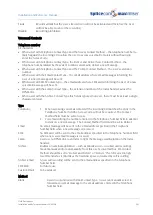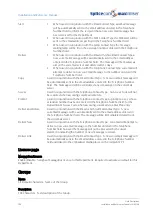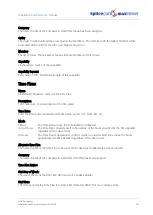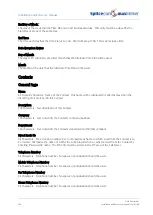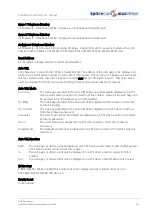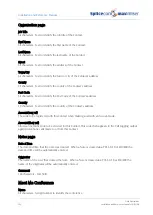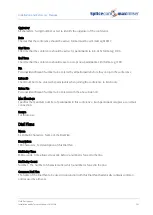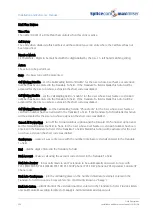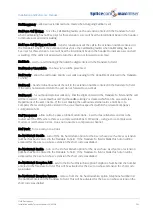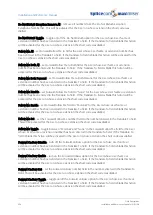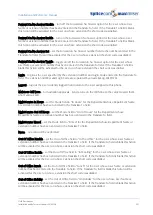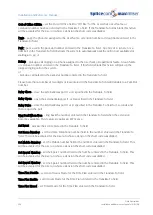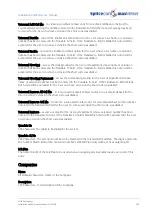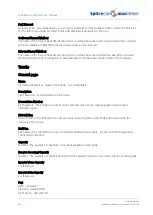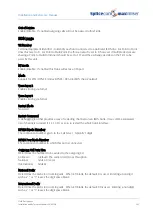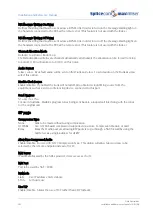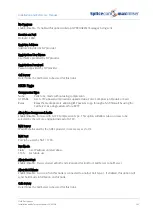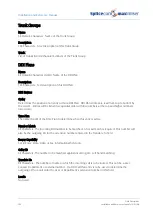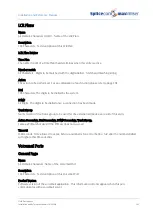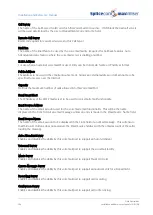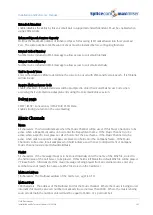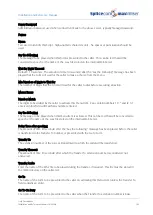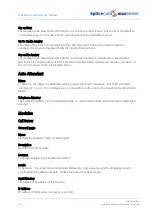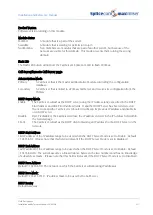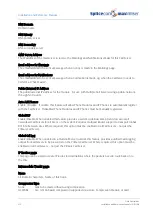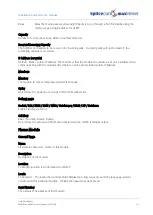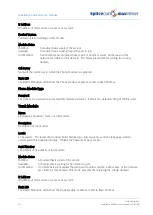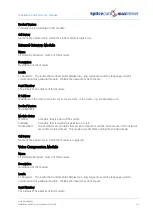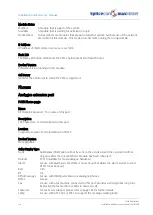
Installation and Reference Manual
Field Descriptions
Installation and Reference Manual v3.2/0410/6
301
Out of Service
Enable/Disable. If enabled outgoing calls will not be passed to this Trunk.
ISDN page
TEI Number
Terminal Equipment Identifier - to identify each unit connected to a particular ISDN line. For Point to Point
lines this is set to 0. For Point to Multi-Point line this can also be set to 0, however if multiple devices are
sharing a Point to Multi-Point line it should be set to 127 and the exchange decides on the TEI's to be
used by this unit.
NT mode
Enable/Disable. If enabled this Trunk will act as an S0 port.
Mode
Support for ETSI / DPNSS / Index DPNSS / PRA Lite ISDN (New Zealand)
Trace Layer 2
Enables tracing via Telnet
Trace Layer 3
Enables tracing via Telnet
Restart Mode
Not used
Restart Command
A debugging tool that provides a way of restarting channels on an ISDN trunk. It is a comma separated
list of channels to restart (1-15, 17-31) or zero to restart the whole trunk interface.
DPNSS Node Number
The component number given to the Call Server. Typically 3 digits.
DPNSS Peer Node Number
The component number to which this port is connected
Outgoing Call Party Plan
Determines the numbers to be added to the outgoing CLI.
Unknown
(default) The carrier determines this option
National
Adds a 0 (zero)
International
Adds 44
National Prefix
Determines the prefix for incoming calls. When left blank, the default, 0 is used. Entering a non-digit
such as “.” or “>” leaves the digit space blank.
International Prefix
Determines the prefix for incoming calls. When left blank, the default, 00 is used. Entering a non-digit
such as “.” or “>” leaves the digit space blank.

